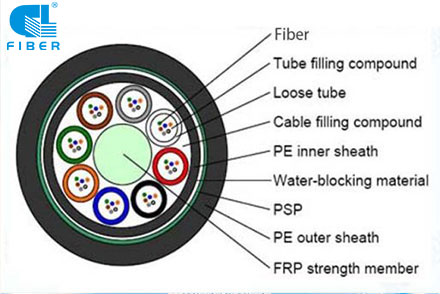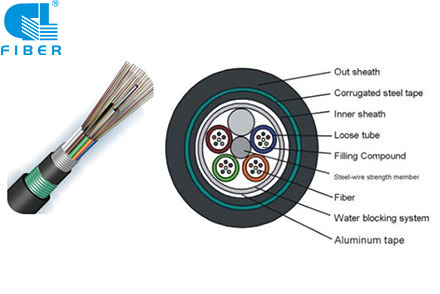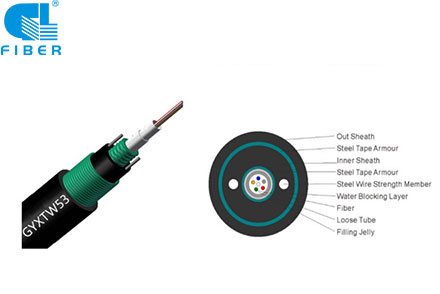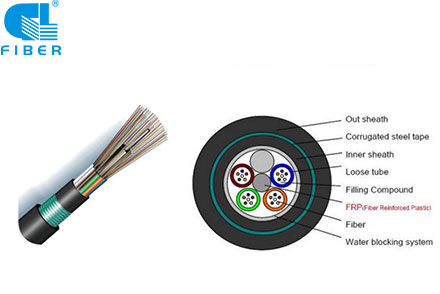What is Direct Buried Fiber Optic Cable?
Direct buried fiber optic cable refers to a type of fiber optic cable that is designed to be installed directly underground without the need for an additional protective conduit or duct. It is commonly used for long-distance telecommunications networks, as well as for high-speed data transmission in various industries.
Here are some key features and considerations related to direct buried fiber optic cables:
Construction: Direct buried fiber optic cables are constructed with multiple layers of protective materials to withstand the harsh underground environment. The core of the cable contains the actual optical fibers that carry the data. Surrounding the core is a buffer layer, which provides additional protection to the fibers. The cable is then insulated with various layers of armor, such as steel or aluminum, to shield it from external forces.
Water and Moisture Resistance: Direct buried cables are designed to be resistant to water and moisture intrusion. They are typically filled with a gel compound that prevents water from seeping into the cable and damaging the fibers. The gel also helps to dissipate heat generated by the transmission of data.
Strength and Durability: Direct buried fiber optic cables are built to withstand the external pressures and stresses associated with underground installation. The armor layers provide mechanical protection against impacts, crushing forces, and rodent damage. The cables are often reinforced with additional strength members, such as aramid fibers, to enhance their tensile strength.
Environmental Considerations: When installing direct buried fiber optic cables, it is essential to consider the environmental conditions, such as soil composition and temperature variations. The cable should be buried at an appropriate depth to protect it from accidental excavations and minimize the risk of damage. Different regions may have specific regulations and guidelines regarding cable burial depths.
Installation and Maintenance: Direct buried fiber optic cables require specialized installation techniques, including trenching or plowing to bury the cable underground. Adequate warning tape or markers should be placed above the cable to indicate its location and prevent accidental damage during future excavations. Periodic inspections and maintenance are necessary to ensure the cable's integrity and address any potential issues promptly.
Advantages: Direct buried fiber optic cables offer several advantages, including lower installation costs compared to using protective conduits or ducts. They eliminate the need for duct installation and can be more straightforward to deploy in certain environments. Direct burial also reduces the overall network latency since there are no additional layers of protection or intermediate points for signal transfer.
Challenges: While direct buried cables have their benefits, there are also some challenges associated with their use. The main concern is the potential for damage due to excavation or accidental disturbances during construction or repair work. When a direct buried cable is damaged, locating and repairing it can be more time-consuming and costly compared to cables within protective conduits.
There are several types of direct burial cables available in the market. Some of the most commonly used ones are GYTA53, GYFTA53, GYFTS53, GYTY53, GYFTY53,GYXTW53, and GYFTY53, Etc.
GYTA53: GYTA53 fiber optic cable is a double jacket double armored stranded loose tube outdoor cable. The loose tube stranding technology makes the fibers have good secondary excess length and allow the fibers free movement in the tube, which keeps the fiber stress-free while the cable is subjected to longitudinal stress. Corrugated steel tape armored and double polyethylene (PE) sheath provide excellent crush resistance and rodent resistance. Metal strength member provides excellent strain performance. It is suitable for direct buried and duct applications.
FYFTA53: The loose tubes are made of high modulus plastics (PBT) and filled with water resistant filling gel. Loose tubes are stranded around the FRP central strength member, cable core is filled with cable filling compound. The corrugated aluminum tape folding and polyethylene (PE) is extruded as inner sheath, then water swollen yarns and corrugated steel tape is longitudinally applied over the inner sheath, and combined with a durable PE sheath.

GYXTW53: GYXTW53 is a central loose tube fiber cable with a double steel tape and a double PE jacket. The cable provides a full section water blocking structure that ensures good water and moisture resistance, a loose sleeve filled with special ointment for critical fiber protection, two parallel round wires that resist tension and side pressure, a small outside diameter, lightweight, and excellent bending performance.
GYFTY53: GYFTY53 is a double sheath outdoor fiber optic cable of non-metallic strength member, loose tube layer stranded filling type, with Polyethylene inner sheath, non-metallic fiber reinforcement, and LSZH outer sheath. The cable provides a full cross-section water-blocking structure to ensure good water-blocking and moisture resistance , loose tube is filled with special ointment for key protection of fiber, glass yarn to ensure the the cable has good tensile properties, and rat-bite prevention, and non-metallic strength member is applicable for multi-thunder area.
It is important to consult with professionals and adhere to industry standards and local regulations when planning and installing direct buried fiber optic cables to ensure a reliable and robust network infrastructure.




